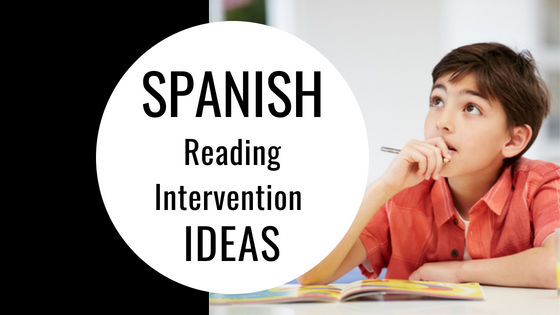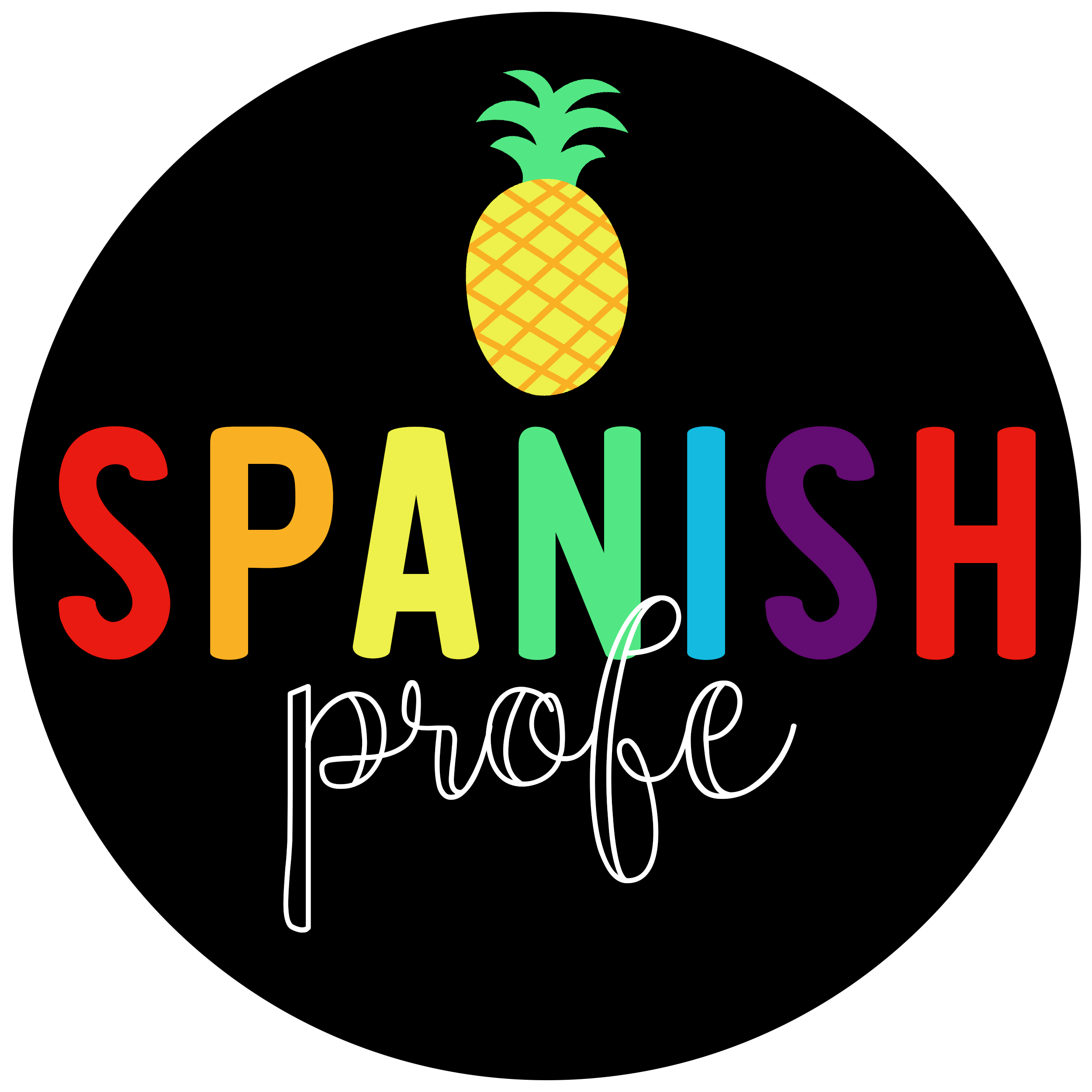Having enough time and the right resources to teach your students to read in Spanish can be frustrating. You may be required to provide individualized intervention to struggling students in your bilingual or immersion classroom and not know where to start. I have made a post with some intervention ideas and pictures that should help you formulate an idea of how to plan your Spanish reading intervention block for your classroom.
Since your reading intervention will depend on each student and their specific needs you will need an idea of what skill you will work on first. It is best to focus on one skill at a time to ensure a student is able to receive some extensive practice on one concrete skill before moving on or jumping into something else.
Most Spanish reading instruction starts with the vowels. The means students should be able to identify (or read) each vowel (upper and lower case) and their sounds. Students can also practice letter identification by looking for (pointing, highlighting, circling, matching, etc.) the letter that they are working on.
After students are secure on reading/knowing their vowels it is most common to move onto syllables starting with: m, p, l, s, etc. I use a variety of reading sound boxes for students to use to sound out words. I start with two syllable words with pictures and then move on to two syllable words without pictures. I also sometimes cover up the picture with a paper or post-it note and then have kids check to see if they read the word correctly by looking under the paper.
When giving doing Spanish reading interventions with students in Kindergarten, first and second grade you most likely will be dealing with a variety of levels and skills at the same time as each student is often “stuck” or needing extra help or guided reinforcement in different spots. It is often difficult to come up with a variety of different leveled Spanish reading intervention ideas for your students. I always feel like I am short on time and I used to neglect taking the time necessary to really plan on my Spanish reading intervention block. I think many bilingual teachers have this same problem.
After students are able to read two-syllable words you may want to work on decoding three-syllable words in Spanish. Again sound boxes work well for this skill and students will be able to use the picture to help them comprehend what they are reading. To make it more challenging you can always give them words to read without a visual.
Another important concept to practice is high-frequency words in Spanish. I have students do a variety of activities or interventions to practice reading these words. I have them read Spanish high-frequency words by racing a timer and checking off words as they go along. I have them roll and dice and read words to “gamify” reading. I also have sheets with high-frequency words in Spanish where they circle the word we are focusing on and then read a short passage or a few sentences with the focus high-frequency word in it.
Lastly, for those students that are ready to read a simple or easy text in Spanish, I have them read and point at each word in a passage and then I have them read the entire passage or Spanish text three time and then answer a couple of comprehension questions from the text.
Organizing my Spanish intervention binders isn’t always easy because it has so many activities. I organize mine into three two-inch binders. I use plastic page protectors to secure the papers into the binder. These also enable students (or myself) to write, circle or underline words or syllables on the pages when necessary and then erase it.
I use these Spanish reading activities at a variety of times throughout the school week. I use them during Spanish reading intervention time, sometimes to use a few activities during literacy centers or my lower guided reading groups. They are also great activities for your educational assistant, paraprofessional or a Spanish speaking parent volunteer use to provide extra reading support or intervention in the classroom.
If you would like to purchase this 250+ page Spanish reading intervention and fluency binder, you can get it here.
What other reading intervention activities do you do in your classroom? Let us know.















